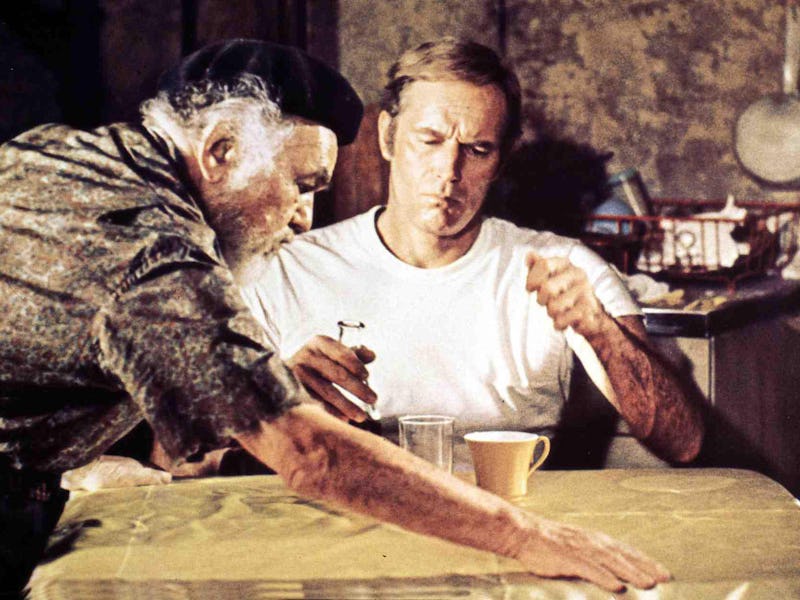50 Years Ago, a Sci-Fi Classic With an Unforgettable Twist Changed the Genre Forever
Soylent Green is more famous for its twist than anything else — and that’s okay.

For better or worse, a lot of classic science fiction relies on a massive twist to really land its premise. The reason why short stories helped spawn the genre is partly that they’re the perfect length for a heady set-up followed by a shocking end. The same goes for early successful sci-fi shows like The Twilight Zone to The Outer Limits, where a reality-bending twist near the end of each episode defined the entire narrative. But in the early 1970s, one classic sci-fi film refined this tradition of twists like no other: Soylent Green.
Before Star Wars changed everything in 1977, most serious science fiction movies were dark. And 50 years ago, on April 19, 1973, one of the darkest sci-fi movies of all time was released. Half a century later, we’re still quoting Soylent Green and its big twist, but the movie’s cultural influence goes even deeper.
Based on the Harry Harrison novel Make Room! Make Room! the film version, Soylent Green, projects a now-familiar dystopian future. Overpopulation leads to food shortages and the systems that propped up our civilization are barely functional. On top of that, nobody reads anymore. The fact that the movie is set in the then-distant future of 2022 should feel laughable and ironic, but watching Soylent Green today won’t give you any kind of catharsis.
Charlton Heston plays Robert Thorn, a detective for the New York Police Department, who, while investigating a string of unsolved murders, stumbles upon a larger truth. In the movie’s future, the only affordable food left are Soylent wafers that come in Red, Yellow, and Green varieties. By the end of the movie, Thorn uncovers a shocking secret. Say it with me: “Soylent Green is people!”
This is literally the point of the entire movie. The runtime of Soylent Green is just a bit longer than 90 minutes, which today, makes it seem like an extra-long episode of Black Mirror. But while certain over-the-top dystopian sci-fi films of the ‘60s and ‘70s hold up — like THX-1138 or Logan’s Run or even the Heston-led classic Planet of the Apes — rewatching Soylent Green today will feel more like the study of the genre of cinematic sci-fi.
U.S. poster art for Soylent Green.
This isn’t to say Soylent Green is bad. It’s not bad at all. And it is a classic. It’s just that because its twist is so on-the-nose, the metaphor kind of overpowers the specifics of the movie. Structurally, because Soylent Green focuses on a cop, it plays out like a police procedural. But, unlike Blade Runner a decade later, the sci-fi cop story doesn’t really subvert the tropes of cop movies enough to feel artful.
If you squint, Heston is a bit like his famous Planet of the Apes character George Taylor (another classic sci-fi movie built entirely on its twist). Except, he’s more like Geroge in Beneath the Planet of the Apes, the forgotten sequel where he just decides to blow up the whole world. Soylent Green is a dark and deeply sad film. Thorn is jaded and hopeless, and though the movie ends with a glimmer of hope that the truth will come out, one has to wonder if the public would really care.
In other words, the brilliance of Soylent Green happens mostly in its final thirty minutes, which, makes you wonder if the movie shouldn’t have been an episode of some anthology sci-fi show.
It’s worse than you thought! (Or exactly what you thought.)
The idea that one social class will literally eat another social class is, also, of course, the primary twist of The Time Machine. But in the Time Machine (the movie and the novel) there are other, competing sci-fi premises that inform the narrative. In Soylent Green, there aren’t. The singular mystery is: What happened to the dead people? And the answer is: They were murdered because they knew too much about Soylent Green.
This kind of cynical sci-fi conspiracy informs countless other wonderful films throughout the history of great science-fiction cinema. Without Soylent Green, maybe we would have never got Strange Days or The Matrix, Snowpiercer, or even Jupiter Ascending. Because the truth is, all of the sci-fi dystopias that followed Soylent Green are, in fact, made out of tiny parts of Soylent Green. But it’s possible that the movies that followed were a bit tastier.
This article was originally published on